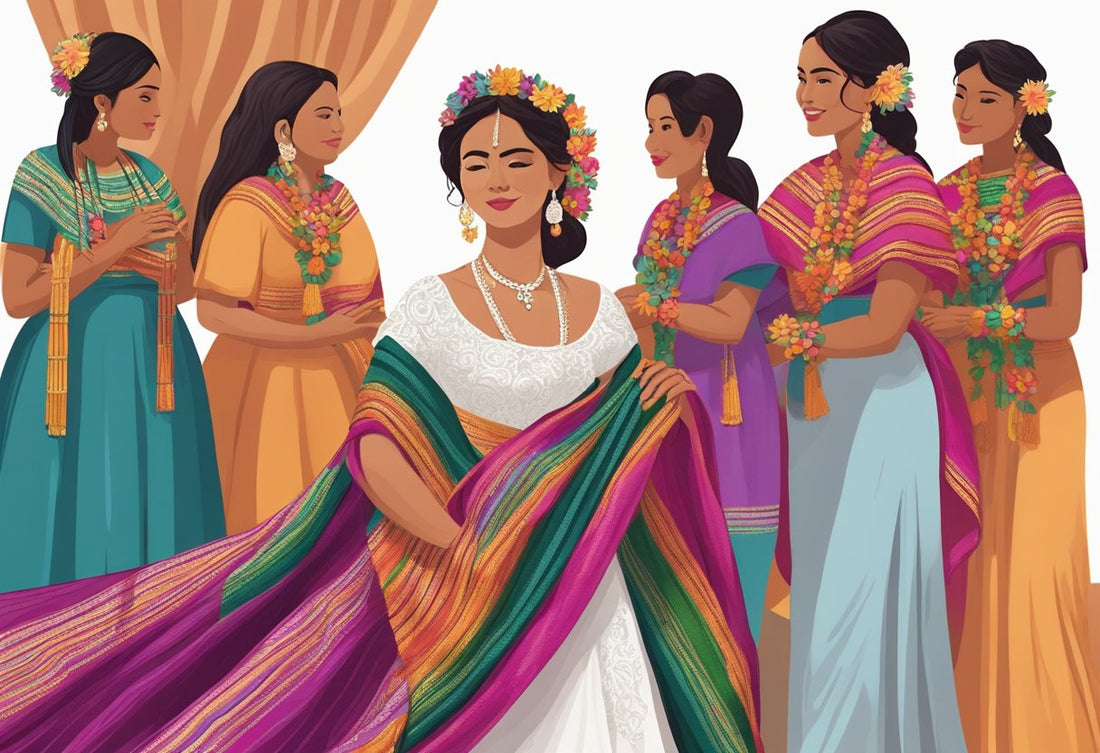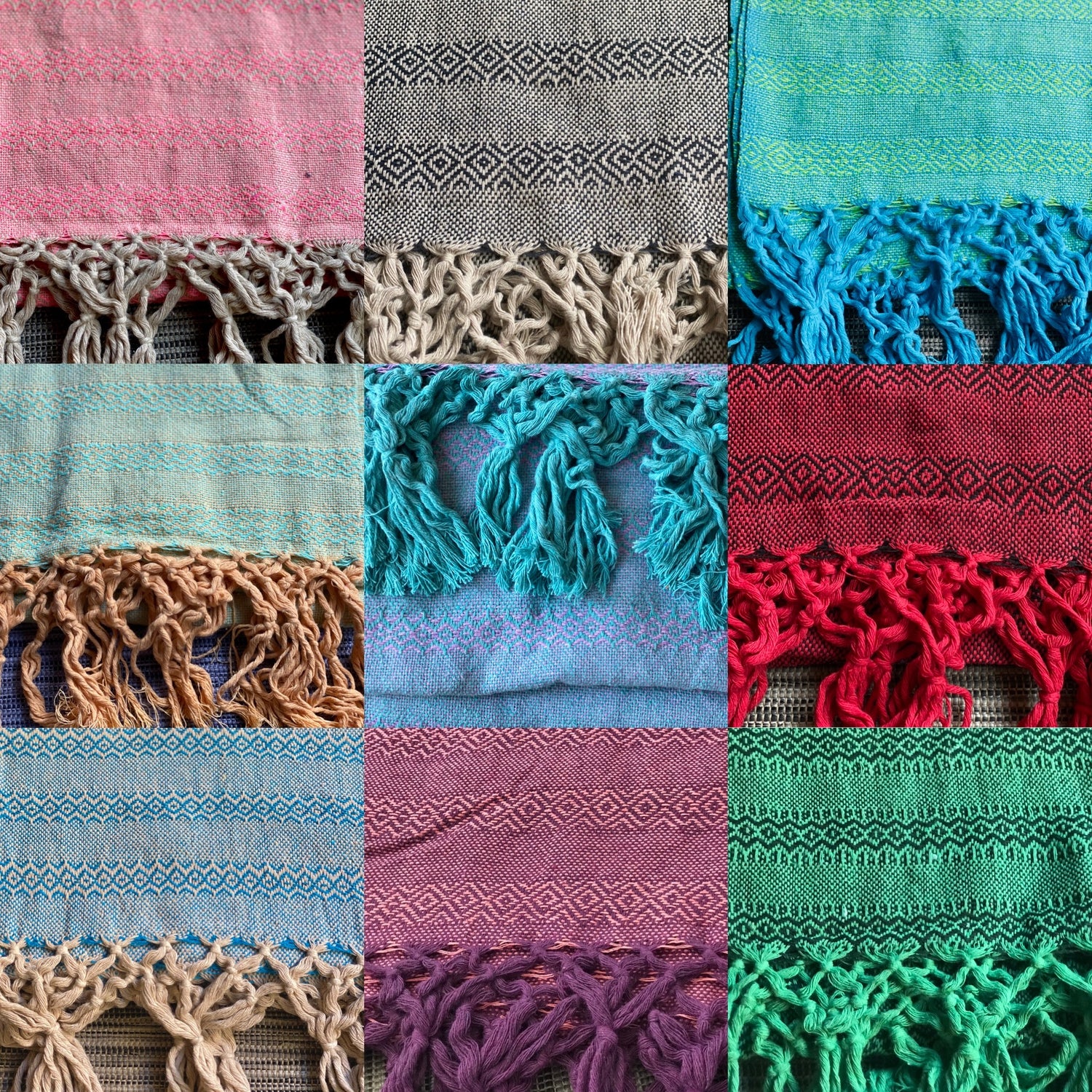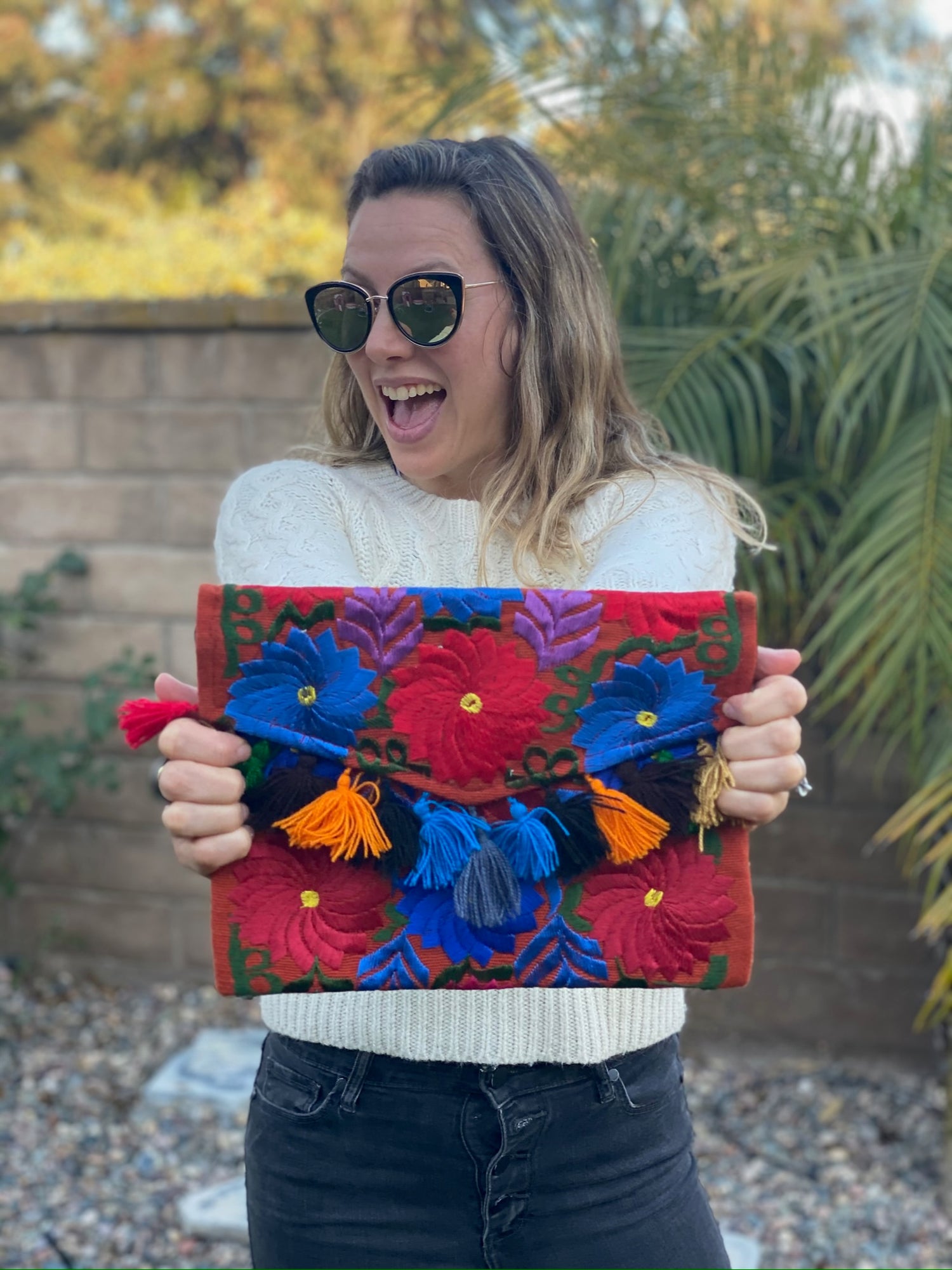The rebozo is a beautiful embodiment of Mexican culture and tradition, especially during significant events like weddings.
In traditional Mexican weddings, the rebozo serves not just as an accessory but as a symbol of love, protection, and heritage.
This versatile shawl enhances bridal attire while connecting the bride to her ancestors and family.

At these weddings, the rebozo is often used in various customs, from the ceremony to the celebration.
Its vibrant colors and intricate designs reflect the rich history and artistry of Mexican textiles. Understanding its role can deepen your appreciation for the cultural significance woven into every stitch.
As you explore the connection between the rebozo and Mexican weddings, you'll discover how this cherished shawl continues to play an important part in uniting generations and honoring traditions.
Key Takeaways
- The rebozo symbolizes love and protection in Mexican weddings.
- It reflects the rich history and artistry of Mexican culture.
- Understanding its role enhances appreciation for wedding traditions.
Cultural and Historical Significance of the Rebozo

The rebozo holds deep connections to Mexican heritage, symbolizing identity and unity within various cultural practices. Its significance spans traditions, craftsmanship, and the vital roles it plays in ceremonies, particularly weddings.
Origin and Evolution in Mexican Society
The rebozo's roots trace back to the pre-Hispanic era, crafted by indigenous women. These artisans originally used materials like cotton and agave fibers, creating pieces that represent their cultural identity.
As you explore its evolution, you'll find that it became a staple garment throughout Mexican society.
The rebozo has morphed into symbolizing femininity, tradition, and pride for women across generations.
It has also adapted over time, influenced by different regions and cultures. This adaptability highlights its importance in preserving cultural practices and craftsmanship.
Symbolism in Weddings and Ceremonies
In traditional Mexican weddings, the rebozo serves as a potent symbol of unity and protection. Wrapped around the bride, it signifies her connection to her family's traditions and heritage.
The rebozo is often used during various wedding rituals, such as the Presentation of the Bouquet, emphasizing its role in binding families together.
Additionally, the Catholic Church has embraced the rebozo, associating it with the Virgin Mary. This connection reinforces its spiritual significance, linking it to rituals that uphold community values and beliefs.
The use of the rebozo in these ceremonies reflects the importance of authenticity and continuity within Mexican culture. It is not just an accessory; it embodies the cultural heritage and collective identity of families and communities.
Artisanal Craftsmanship of the Rebozo
Creating a rebozo is a labor-intensive process that requires skill and dedication. Artisans utilize traditional techniques, such as the backstrap loom, to produce these intricate fabrics.
Many rebozos showcase stunning patterns and colors achieved through natural dyes.
Through embroidery and ikat techniques, artisans infuse each piece with personal significance and cultural narratives. This craftsmanship highlights the importance of education and preservation—key to passing down these skills to future generations.
When you wear or see a rebozo, you appreciate not only its beauty but also the stories of the indigenous communities behind each creation. This artistry is a vital link to Mexican heritage, celebrating the unity and identity of a culture rich in history.
Rebozo's Integration into Wedding Customs

The rebozo plays a significant role in traditional Mexican weddings. It is woven into various customs and rituals that celebrate love, unity, and commitment. Understanding its importance enhances the depth of wedding ceremonies.
Rebozo in Traditional Wedding Attire
In traditional Mexican weddings, the rebozo adds a touch of cultural richness to the bridal attire.
Brides often wear a beautiful, handcrafted rebozo that complements their wedding dress or huipil.
These shawls come in vibrant colors and intricate patterns, showcasing the artistry of local weavers. The rebozo serves as both a fashion statement and a symbol of love, enveloping the bride in warmth and care.
Brides might also choose to incorporate family heirloom rebozos, which carry sentimental value. This connection to family traditions emphasizes the importance of lineage and heritage during the ceremony.
Ceremonial Roles and Rituals
The rebozo is also integral to various wedding rituals.
During the Catholic Mass wedding ceremony, it can be used in the lasso ritual, or El Lazo. This involves draping a rebozo around the couple to symbolize their unity and commitment to each other.
In many weddings, godparents, or padrinos and madrinas, play a role in presenting the rebozo. They may wrap it around the couple, signifying their support and blessings.
Additionally, the rebozo is often featured during traditional dances at the reception. This allows for artistic expression and connection between the couple and their community.
Expressions of Unity and Prosperity
The rebozo symbolizes not just love but also unity and prosperity. As part of wedding customs, it represents the couple’s journey together.
In addition to being a beautiful accessory, the rebozo has practical uses throughout the celebration.
It can help carry a bridal bouquet or additional items during the reception, like pork carnitas, chiles rellenos, and tamales.
During the money dance, guests may pin money to the rebozo as a way to wish the couple luck and prosperity. This act illustrates the community's support and local customs around wealth sharing.
The vibrant colors and weaving traditions of the rebozo serve as a reminder of the couple's mutual commitment and shared future.
Frequently Asked Questions

In this section, you will find key information about the role of the rebozo in traditional Mexican weddings. This includes its significance, traditional uses, cultural importance, and how modern practices have evolved.
What is the significance of the rebozo in Mexican wedding ceremonies?
The rebozo symbolizes love, protection, and unity. It is often used in ceremonies to wrap the couple, representing their bond and the support they offer each other.
How has the rebozo been traditionally used in Mexican weddings?
Traditionally, the rebozo is worn by brides as part of their attire. It may also be used during the ceremony itself, such as in the wrapping of the couple or as a decorative element.
What cultural importance does the rebozo hold in Mexican society?
The rebozo serves as a cultural icon, representing Mexican heritage and identity. It is often passed down through generations, holding sentimental value for families.
Can you describe the traditional process of weaving a rebozo for a wedding?
Weaving a rebozo involves skilled craftsmanship. Artisans use techniques passed down over generations, often incorporating vibrant colors and intricate patterns, particularly for special occasions like weddings.
How do modern Mexican weddings incorporate the rebozo, if at all?
In modern weddings, the rebozo remains significant. While some brides still wear it traditionally, others may incorporate it as a decorative piece or use it in rituals to honor their heritage.
What are the differences in rebozo usage between various regions in Mexico?
Rebozo styles and uses vary by region. Some areas emphasize specific weaving techniques and patterns. Meanwhile, others have unique customs for incorporating the rebozo into wedding ceremonies.




